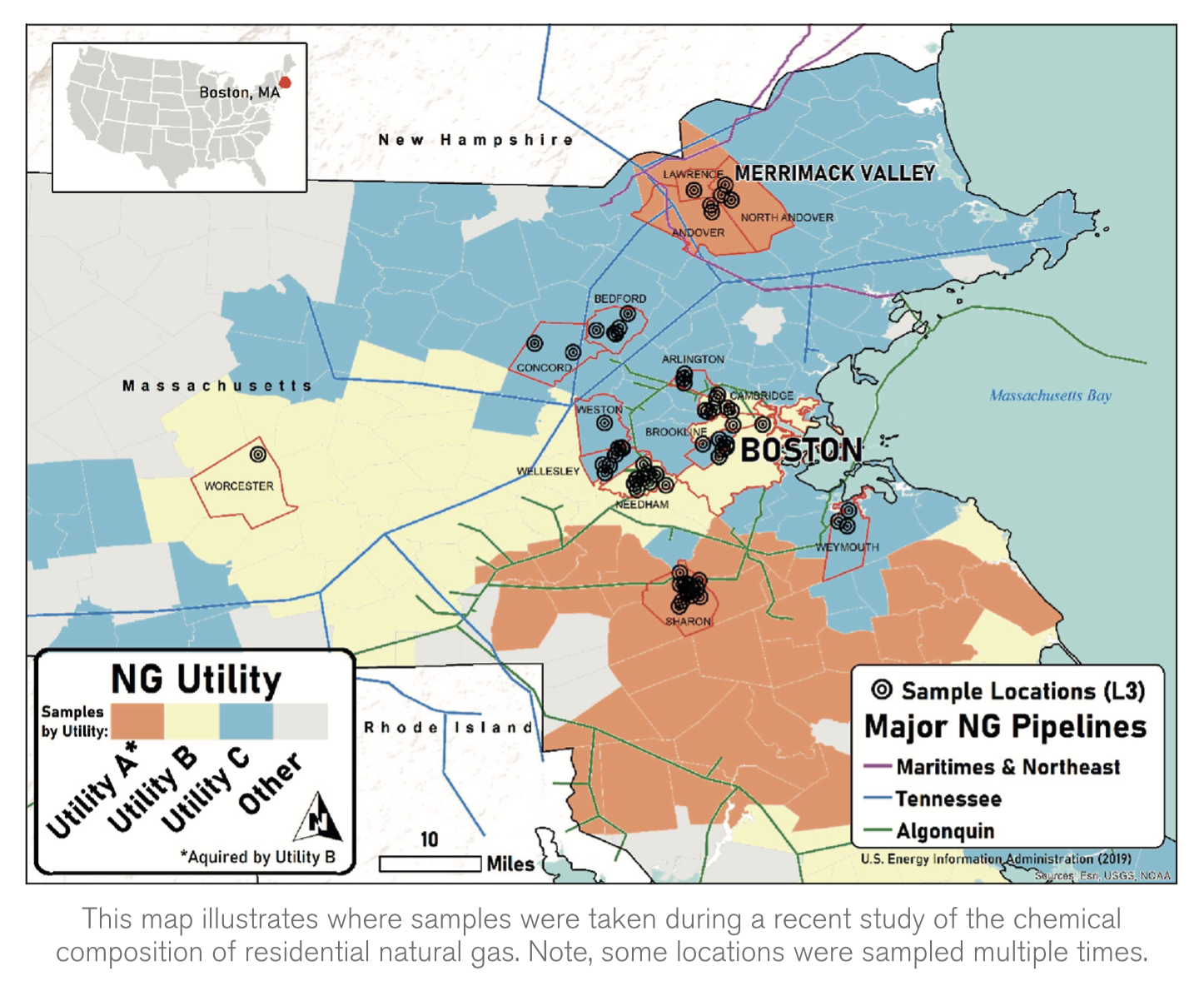All
Look at What They’re Selling You

Study exposes toxic chemicals in natural gas used for heating and cooking
“Natural gas delivered to homes contains trace amounts of nonmethane gases that can impact air quality and human health at any point where natural gas is leaked.” That’s the synopsis of a study published June 28 in the academic journal, Environmental Science & Technology.
Researchers from Harvard and Boston University set out to determine exactly what’s in the natural gas piped into homes for heating and cooking. They collected 234 samples from 69 homes in the Boston metro area.
If you thought natural gas was just methane, think again.

The study found 296 additional volatile organic compounds (VOCs) in residential natural gas. Of these VOCs, 21 are considered hazardous air pollutants. The most common hazardous air pollutants discovered were: benzene, detected in 95% of the natural gas samples; toluene, found in 94% of the samples; heptane, also in 94%; and cyclohexane, in 89%.
According to another recent study, six utilities reported 24,455 natural gas leaks in Massachusetts in 2019. The majority of these gas leaks — 15,723 to be precise — still had not been prepared when that study was released in March 2022 (see “Industry News,” March 2022 issue, print edition, page 40).
Using existing leak data, the researchers on the VOC study were able to estimate that as much as 356 kilograms of benzene is emitted in the Boston area each year from known natural gas leaks. And that’s just what’s released outside. Never mind indoor leaks, which the study says “may be an underappreciated source of both [methane] and associated VOCs.”
On top of all this, none of these newly discovered chemicals are accounted for in Massachusetts’s current emissions inventories.
“There is some previous documentation of chemicals found in gas along the pipeline, but until now there has been no independent academic research, accessible to the public, on the chemistry of the gas delivered to our homes,” said Molly Fairchild, one of the authors of the study.
What exactly do these chemicals do to us? Additional research will be needed to determine the precise degree of exposure for residents who use natural gas every day and the risks involved. However, the Centers for Disease Control and Prevention says even short-term exposure to benzene can cause drowsiness, dizziness, headaches, and irritation of the eyes, skin and lungs.
Sound familiar?
Some of these exact symptoms were reported by California residents who were forced from their homes by the Aliso Canyon gas leak of 2015-2016. Last September, Southern California Gas Co. shelled out $1.8 billion in a settlement with 35,717 people whose lives were upended by that leak, which is considered the largest in U.S. history (see “Industry News,” November/December 2021 issue, print edition, page 40). Of course, Massachusetts residents are no stranger to major gas leaks, with the Merrimack Valley disaster of 2018 still fresh in the minds of many.
Beyond the aforementioned symptoms, long-term exposure to natural gas leaks may carry additional health risks. Benzene is a known carcinogen. The Department of Health and Human Services has determined that long-term exposure to high levels of benzene in the air can cause leukemia, cancer of the blood-forming organs.
With such toxic chemicals floating around, some people are surely beginning to wonder what’s so ‘natural’ about natural gas. This may even include persons in positions of power and influence, like say, decision-makers in climate policy groups.
In December 2021, the New York State Climate Action Council released its Draft Scoping Plan. The plan was written to help the state achieve the goals of its Climate Leadership and Community Protection Act, namely reducing greenhouse gas emissions 40% by 2030 and 85% by 2050. Throughout New York’s climate plan, natural gas is frequently referred to as fossil gas. For example, on page 274, the plan states, “the vast majority of current fossil gas customers (residential, commercial, and industrial) will transition to electricity by 2050.”
Related Posts
 From Blue Flame to Biofuels
From Blue Flame to Biofuels
Posted on June 25, 2025
 HEAT Show Announces Fenway Park Backyard BBQ
HEAT Show Announces Fenway Park Backyard BBQ
Posted on May 15, 2025
 Delivering New York City’s Clean Energy Solutions
Delivering New York City’s Clean Energy Solutions
Posted on May 14, 2025
 Are You a Leader or a Boss? The Choice is Yours
Are You a Leader or a Boss? The Choice is Yours
Posted on May 14, 2025
Enter your email to receive important news and article updates.
